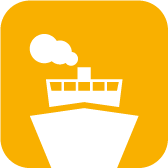Environment Fact Sheets
Compiled by scientists from various research institutes around the Baltic Sea, the HELCOM Baltic Sea Environment Fact Sheets (BSEFS)1 provide information on the recent state of and trends in the Baltic marine environment.
The BSEFS do not have quantitative targets for measuring progress towards good ecological/environmental status and thus do not qualify as core indicators. However, they do provide important supporting data and information for core indicators and other HELCOM assessment products.
The fact sheets therefore provide supplementary information to the HELCOM core indicators which are specifically developed for following up on progress towards reaching the different HELCOM objectives such as the ones defined in the Baltic Sea Action Plan or the Good Environmental Status (GES) under the EU Marine Strategy Framework Directive.
The BSEFS categories
At present, the Baltic Sea environment fact sheets inform about:
- Biodiversity, such as species composition, biopollution and non-indigenous species;
- Eutrophication, such as inputs and concentrations of nutrients and cyanobacterial blooms;
- Hazardous substances, such as their inputs and concentrations, including radioactivity;
- Hydrography, such as temperature, salinity, inflows and runoff which largely regulate the marine life;
- Maritime activities, such as illegal oil spills and emissions from shipping.
A Baltic Sea environment fact sheet presents information using data obtained by HELCOM monitoring programmes:
- Pollution Load Compilations (PLC-Air and PLC-Water)
- Cooperative Monitoring in the Baltic Marine Environment – COMBINE
- Monitoring of Radioactive Sustances (MORS)
In addition to and based on some of these fact sheets, HELCOM has developed core indicators that measure progress towards reaching the ecological objectives defined in the Baltic Sea Action Plan. So far, there are core indicators for measuring the status the marine environment in terms of eutrophication, biodiversity and hazardous-substances.
Many core indicators have been developed from HELCOM Baltic Sea environment fact sheets. Baltic Sea environment fact sheets lack quantitative targets for measuring progress towards good ecological/environmental status and thus do not qualify as core indicators, however, they do provide important supporting data and information for core indicators and other HELCOM assessment products.
1. General Procedure
The HELCOM Baltic Sea environment fact sheets are to be developed taking into account the assessment needs of HELCOM and also considering EU directives and marine policy under the Russian Federation.
The objective is that HELCOM will have a number of approved Baltic Sea environment fact sheets available on an annual basis via the HELCOM website. The information contained in the fact sheets supports other HELCOM assessment products.
The Baltic Sea environment fact sheets are produced and updated by responsible institutes. A list of the institutes and data centres providing Baltic Sea environment fact sheets is kept updated by the HELCOM Secretariat and scrutinized by HELCOM State and Conservation and Pressure Working Groups on a regular basis.
2. Guidelines for the Baltic Sea Environment Fact Sheets
- The Baltic Sea environment fact sheet should be scientifically sound and written in English.
- The Baltic Sea environment fact sheet presents selected parameters that reflect ecosystem components and events, or impacts and pressures from human activities, with the aim of supporting the understanding of changes in the status of the Baltic Sea. They should be based on time series and trends to greatest possible extent so that changes in pressures and/or state can be evaluated.
- Institute logos can be used to present the responsible institute(s) and data centre(s). Author name(s) should be given so that the sheets can be properly referenced.
- The outline contained in Annex 1 should be followed in all fact sheets.
- The basic report should be concise and preferably not longer than 5 pages, including figures. Links should be used to other relevant fact sheets or other information sources.
- In order to make the Baltic Sea environment fact sheets clear and reader-friendly, information could be presented, in addition to the basic report, in several linked hypertext documents, keeping the most important information on the basic report.
- The key message should be short and communicative.
- Units should preferably follow the International System of Units (SI).
- Graphs should be easily readable with proper scales and readable fonts and understandable without confronting the text. Formatting of text should be identical to the formatting of the template included in Annex 3.
- Instead of series of annual maps, a temporal trend, if possible, should be made and only the map referring to the most recent year should be presented; previous maps could be presented on a second layer of the fact sheet.
- Unified division of the Baltic Sea should be used as contained in Annex 2.
3. Reviewing Procedure
New Baltic Sea environment fact sheets must be delivered to the Secretariat, whereafter a review takes place according to the following procedure:
- national experts appointed by HELCOM State and Conservation and/or Pressure Working Group Contacts review the new Baltic Sea environment fact sheets;
- the Secretariat collects all reviews and communicates them to the authors of the Baltic Sea environment fact sheets for revision;
- the Secretariat presents the reviewed Baltic Sea environment fact sheets for consideration to HELCOM State and Conservation or HELCOM Pressure and the respective Working Group agrees on their publishing.
Existing Baltic Sea environment fact sheets are updated and published on the HELCOM website intersessionally without separate approval process by HELCOM State and Conservation or Pressure.
4. Schedule
Proposals for new Baltic Sea environment fact sheets should be submitted to the Secretariat annually by 1 September for the expert review process.
Update of existing Baltic Sea environment fact sheets should be annually submitted to the Secretariat no later than 30 September.
The Secretariat summarizes annually the list of BSEFS and their update status for the consideration of HELCOM State and Conservation.
Annex 1
Outline of Helcom Baltic Sea Environment Facts Sheets
The content of HELCOM Baltic Sea environment fact sheets should pursue the following outline:
- Title of Baltic Sea environment fact sheet
- Key message
- Results and assessment
Relevance of the BSEFS for describing developments in the environment
Policy relevance and policy references
Assessment
References - Data
- Metadata
Technical information
Data source
Description of data
Geographical coverage
Temporal coverage
Methodology and frequency of data collection
Methodology of data manipulation
Quality information
Strength and weakness (at data level)
Reliability, accuracy, robustness, uncertainty (at data level)
Further work required (for data level and indicator level).
The content of the fact sheets should allow the following general questions to be answered. These questions should be seen as a test that is applied to each fact sheet submitted for review and acceptance by HELCOM State and Conservation or HELCOM Pressure.
Is the presentation attractive to the eye (accessible)?
Is the presentation of results easy to interpret correctly?
How is this variable representative to the issue or area being considered?
What are the causes behind the development (trends) of the variable?
What is the shortest time period required to show change?
Is the variable based on data which are updated at regular intervals?
Is the data (raw data or variable data) allowing international comparability? What would make the data non-comparable (differences in national definitions, changes over time to the definition and methodologies, etc.)?
Scientifically, is the work well done? Is the selected variable well founded and of good quality (data & methodology)?
Is there consensus on the data validity: data collection methods, statistical methods, etc.?
Annex 2:
Division of the Baltic Sea Into Sub-Regions
The HELCOM Baltic Sea environment fact sheets are to present information based on the sub-basin division agreed on in the HELCOM Monitoring and Assessment Strategy.
Annex 3
Template for the Text Format of the BSEFS
Formatting of text in BSEFS should be identical to the formatting of this template.
For reference purposes, please cite this indicator fact sheet as follows:
[Author’s name(s)], [Year]. [Indicator Fact Sheet title]. HELCOM Baltic Sea Environment Fact Sheets 2015. Online. [Date Viewed],
http://www.helcom.fi/baltic-sea-trends/environment-fact-sheets/ ADD FULL LINK
1) The 17th meeting of the HELCOM Monitoring and Assessment Group (HELCOM MONAS 17/2012) decided that “HELCOM indicator fact sheets” should be renamed as “Baltic Sea Environment Fact Sheets” (BSEFS) to differentiate them from HELCOM Core Indicators, which are used for follow-up of the Baltic Sea Action Plan.





